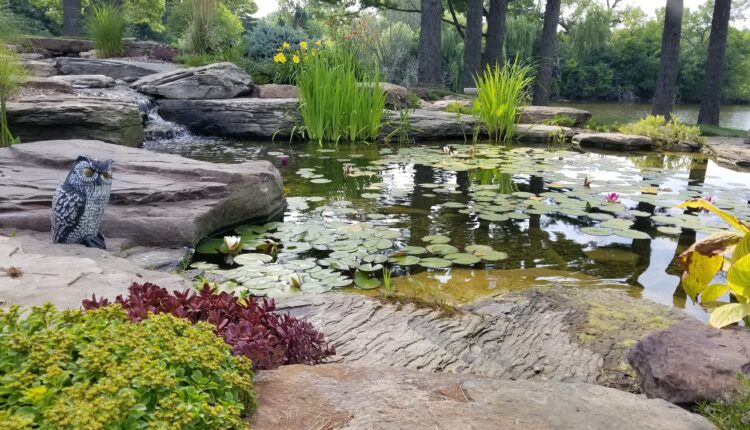Advice and Ideas for Water Gardens
Water Garden Ideas
Many beautiful and unusual plants can be grown in a water garden, and making such a garden is an adventure within reach of everyone. Almost any receptacle capable of holding water is a potential pool, and there are water lilies small enough to live and flower in an ordinary-sized washing-up bowl.
If a pool is well constructed, care is taken with the planting, and the suitable planting compost material and aquatics (water plants) are chosen, water is easier to manage than grass. But with no other feature in the garden is the margin between success and failure so delicately poised. Great care is needed to hold the balance between clear water and a well-managed pool on the one hand and smell, slime, green water and rank aquatics on the other.
Ideas for Siting a Water Garden
The position of a water garden is crucial, for water-lilies and most aquatics love the sun. The warmer the water, the more luxuriant the growth and the greater the number of blooms. Therefore, the best position for a pool is in the open, as far as possible.
The shelter of trees or a hedge to the north or northeast of the water garden can break the force of driving winds. It will considerably extend the flowering season, but be sure to build the pool some distance from the trees or hedges so that dead leaves do not fall into the pool and foul the water. Alternatively, if your water garden is close to trees or a hedge, you can spread wire netting over the pool’s surface during the few weeks of the autumnal leaf fall.
A very deep pool can be a disadvantage since depth controls the temperature of the water, but the water must not be too shallow, or it will freeze up in winter. Fifteen to 18 inches of water above the crowns of plants is shallow enough to induce free flowering yet sufficiently deep to safeguard the roots in winter. Rock garden pools are often only 1 foot or even less in-depth and should be protected during bad weather, but such precautions are impracticable for larger pools.
Water gardens are formal or informal and should fit in with their surroundings. The traditional water garden is the dominant feature of a garden – in a central position or the critical point of an area to which all paths lead. It is regular in shape (a circle, square, oblong or some geometric form), and its outline is defined with a raised kerb or flat, paved surround. Fountains can be placed in the water garden. As a general rule, running water is not desirable, especially if the water supply comes from a natural spring or similar low-lying source, because it will constantly lower the temperature and destroy the calm on which water-lilies thrive.
Formal pools look better in conventional surroundings and do not blend with natural features such as wild or rock gardens or alpine meadows. Keep the vegetation in them low, using water-lilies and submerged and floating aquatics rather than marginals and bog plants.
An informal pool should not disclose its origin. The concrete or other material it is made can be hidden by keeping the outer edges below the level of the surrounding ground and by the skilful use of marginal plants – bog and aquatics being used to bridge the gap between the water and dry land. The informal pool blends with any natural setting and is not the best type of pool for a formal rose garden or similar tailored feature.

